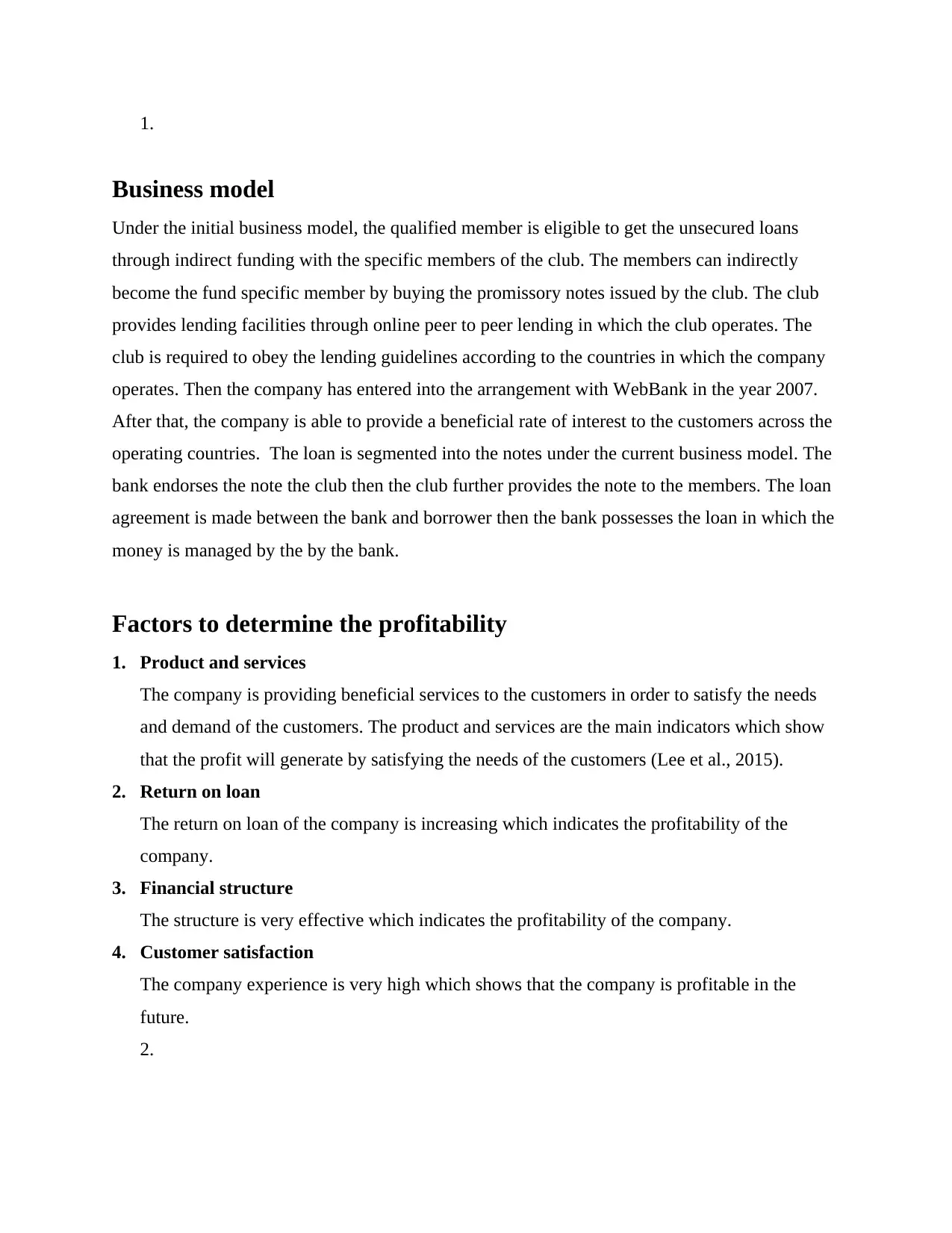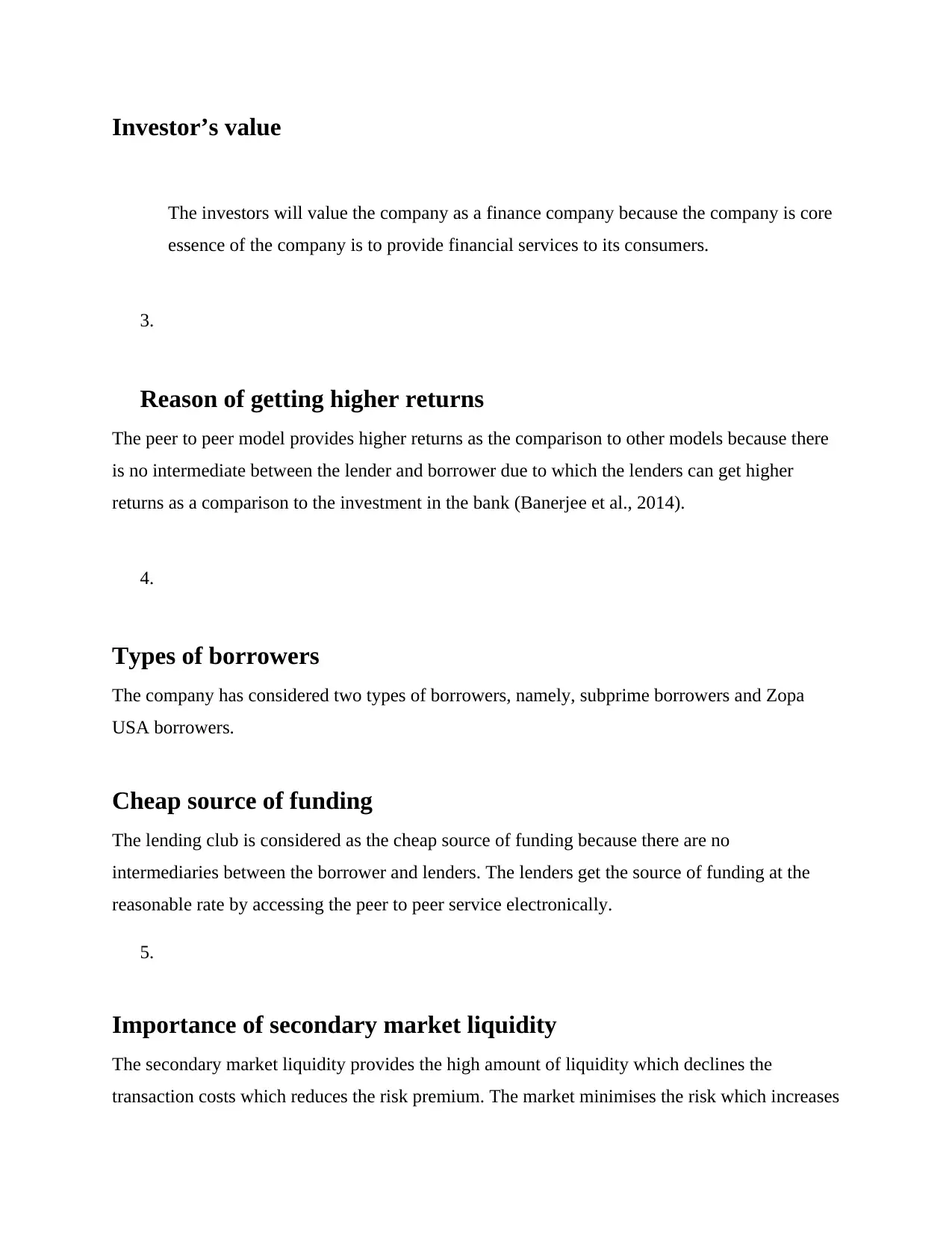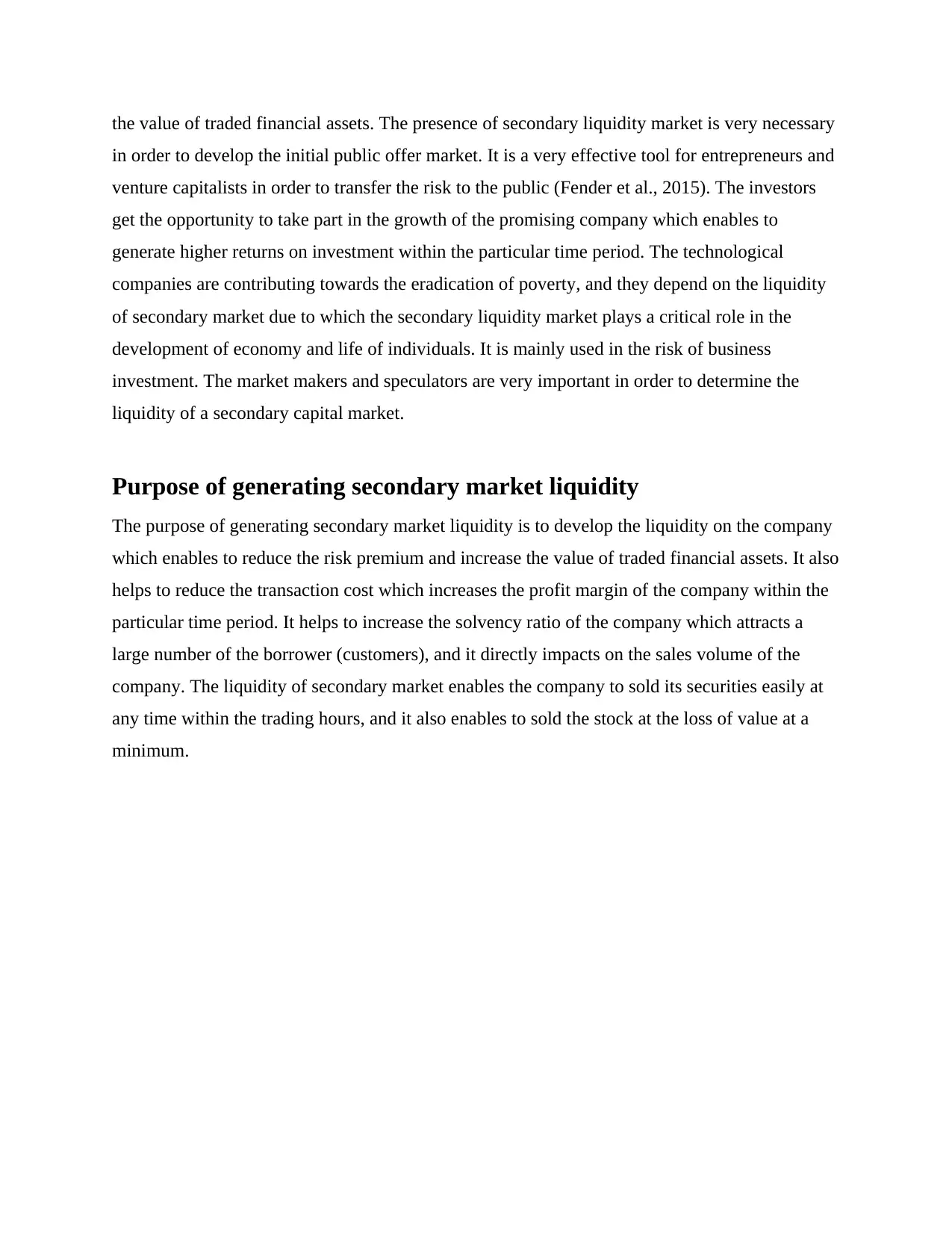Case Study: Lending Club's Business Model and Financial Analysis
VerifiedAdded on 2019/09/30
|5
|871
|166
Case Study
AI Summary
This case study examines the business model of Lending Club, focusing on its peer-to-peer lending operations and financial strategies. It explores how the company initially provided unsecured loans through indirect funding, utilizing promissory notes and online lending platforms. The analysis delves into the factors influencing Lending Club's profitability, including product and service offerings, return on loans, financial structure, and customer satisfaction. The study highlights the advantages of the peer-to-peer model, such as higher returns due to the absence of intermediaries. Furthermore, it discusses the importance of secondary market liquidity, its role in reducing transaction costs, and its impact on the company's ability to attract borrowers and generate revenue. The case study also references the types of borrowers Lending Club serves and its use of WebBank partnerships for competitive interest rates.
1 out of 5












![[object Object]](/_next/static/media/star-bottom.7253800d.svg)